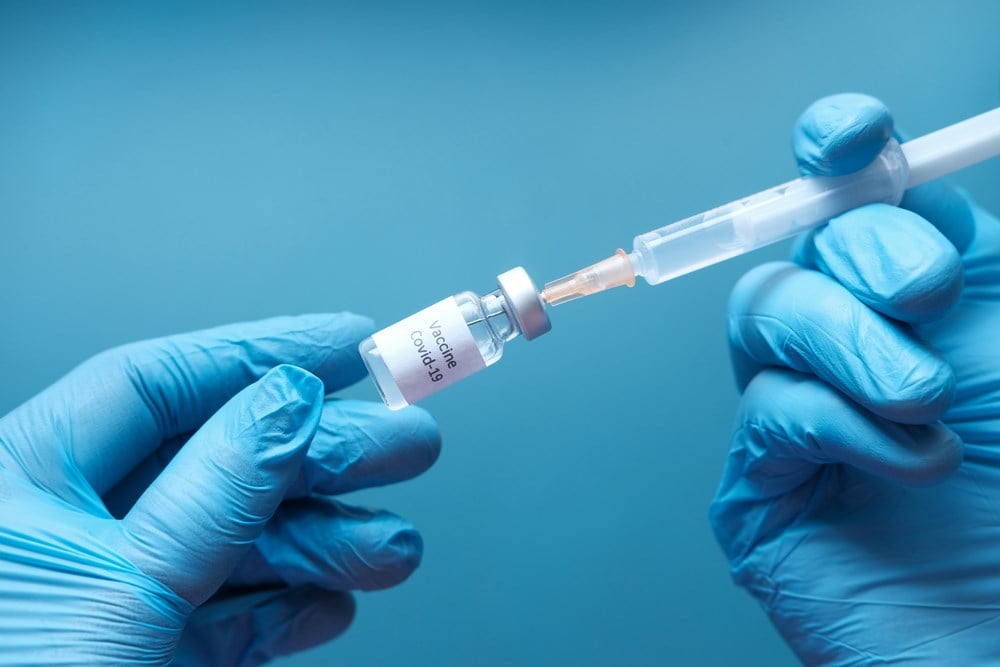
The defensive stocks sector has been underperforming most - if not all - of the remaining cyclical sectors in the U.S. economy. These preferences come from underlying dynamics in the money markets and where investors think we are in the business cycle. These preferences can be visually spotted by charting the past twelve-month performance of the Health Care Select Sector SPDR Fund (NYSEARCA: XLV).
This stock has fallen behind the SPDR S&P 500 ETF Trust (NSYEARCA: SPY) by as much as 13.9% during this period. One name is making headlines within these universes today, with new developments that could turn these performance gaps around.
Moderna (NASDAQ: MRNA) is said to have landed its first business deal in China, a move that comes during heightened geopolitical tensions between the U.S. and the Asian giant. Some investors may be concerned that this news may be a corporate stunt to raise the current sentiment in the stock, especially after a more than 70% decline from the stock's all-time high price of $497.49 back in 2021.
Now that COVID-19 cases have subsided and the subsequent demand for what was once the company's hottest product line has faded, the stock needs a new 'Hail Mary' to spark some momentum back to its former glory.
What's the Vote
The initial checkpoint investors can begin to check for what markets are thinking of these new developments is to hover over the spreads between valuation multiples across the industry peers. Companies like Gilead Sciences (NASDAQ: GILD), as well as Regeneron Pharmaceuticals (NASDAQ: REGN), have both significantly outperformed Moderna stock, blowing past it by as much as 39.5% during the past twelve months.
As the bearish perception shows up in the price action between these peers, markets further reiterate their lack of confidence by assigning the lowest price-to-earnings ratio in the group to Moderna.
Considering that Moderna stock rose by as much as 4.0% during the opening of Wednesday's trading session, its current 10.7x P/E ratio rose from a previous 6.5x just a month ago.
This can act as a bullish sign for investors to lean on, as broader markets may be pivoting on their previously bearish outlooks and are looking for new catalysts to justify a near doubling in the underlying valuation. Moderna analyst ratings are on the same rocking boat, as there is a current price target consensus of $179.88, which translates to a 44.3% potential upside. Top-side price targets point towards $296.0 per share, which would still fall below the official 'Bear Market' level of $398, marking a 20% retracement from the all-time high price of $497.49.
Conversely, the P/E ratio in Gilead Sciences fell from 22.0x a month ago to today's valuation of 17.4x. Following a similar pattern, Regeneron Pharmaceuticals also saw its valuation multiples lower, going from 21.5x a month ago to 19.4x today. While this is not a definitive directional sentiment, it can be the foundation of a significant pivot in sector preference, especially when the underlying economy is under recessionary threats.
Should the economy fall into a recession, broader markets will look to flee cyclical stocks and enter the defensives (as they typically do), making Moderna the cheaper alternative in this space.
Deal Hopes
According to a Chinese media source, Yicai, Moderna is set to enter a memorandum of understanding and land collaboration agreement. These strategic choices will enable the company to research, develop, and manufacture mRNA vaccines in China. The caveat is that the end product will be exclusively available for the Chinese population, with the possibility of exports still to be discussed at future dates.
The decision came after the severe revenue declines and expected future losses stemming from the exposures to the U.S. market, perhaps providing medicine to the world's second-largest economy will turn the stock price on its head.
Following the company's latest presentation, investors can hop over to the 'Capital Allocation Highlights' slide and note where the company is looking to invest. Executives may be looking to repeat their $1.1 billion R&D (Research and Development) capital expenditure, as Chinese sources point to an estimated $1 billion investment from the company into these facilities.
The main question becomes, will the move into China be profitable enough to deliver an acceptable ROI from the expenditure? Considering that the biotech operator is seeing its U.S. market share decline, investors can only speculate about the future of this project. Nonetheless, successful adoption and scaling in China could act as a catalyst justifying the rising valuation multiples.